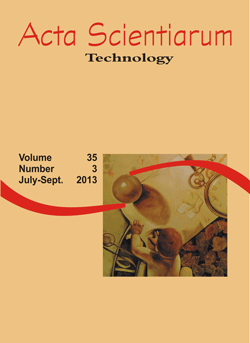<b>A bootstrapped neural network model applied to prediction of the biodegradation rate of reactive Black 5 dye</b> - doi: 10.4025/actascitechnol.v35i3.16210
DOI:
https://doi.org/10.4025/actascitechnol.v35i3.16210Palavras-chave:
resampling, pattern recognition, textile dyes, treatment of effluents, simulationResumo
Current essay forwards a biodegradation model of a dye, used in the textile industry, based on a neural network propped by bootstrap remodeling. Bootstrapped neural network is set to generate estimates that are close to results obtained in an intrinsic experience in which a chemical process is applied. Pseudomonas oleovorans was used in the biodegradation of reactive Black 5. Results show a brief comparison between the information estimated by the proposed approach and the experimental data, with a coefficient of correlation between real and predicted values for a more than 0.99 biodegradation rate. Dye concentration and the solution´s pH failed to interfere in biodegradation index rates. A value above 90% of dye biodegradation was achieved between 1.000 and 1.841 mL 10 mL-1 of microorganism concentration and between 1.000 and 2.000 g 100 mL-1 of glucose concentration within the experimental conditions under analysis.
Â
Â
Downloads
Downloads
Publicado
Como Citar
Edição
Seção
Licença
DECLARAÇíO DE ORIGINALIDADE E DIREITOS AUTORAIS
Declaro que o presente artigo é original, não tendo sido submetido í publicação em qualquer outro periódico nacional ou internacional, quer seja em parte ou em sua totalidade.
Os direitos autorais pertencem exclusivamente aos autores. Os direitos de licenciamento utilizados pelo periódico é a licença Creative Commons Attribution 4.0 (CC BY 4.0): são permitidos o compartilhamento (cópia e distribuição do material em qualqer meio ou formato) e adaptação (remix, transformação e criação de material a partir do conteúdo assim licenciado para quaisquer fins, inclusive comerciais.
Recomenda-se a leitura desse link para maiores informações sobre o tema: fornecimento de créditos e referências de forma correta, entre outros detalhes cruciais para uso adequado do material licenciado.



















